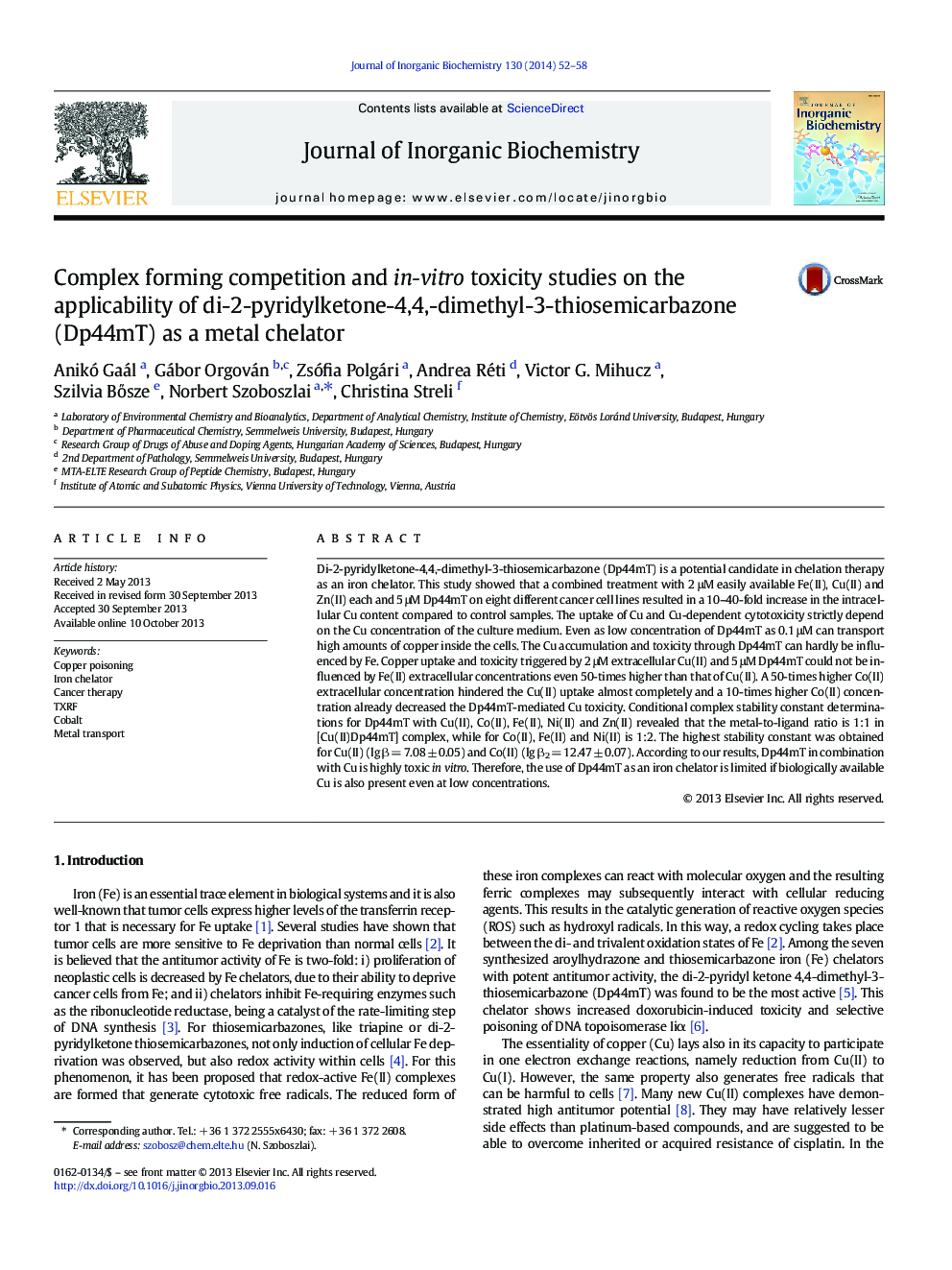| Article ID | Journal | Published Year | Pages | File Type |
|---|---|---|---|---|
| 1316288 | Journal of Inorganic Biochemistry | 2014 | 7 Pages |
•New stability constants calculated for Dp44mT with Co(II), Fe(II), Fe(III) and Zn(II)•Intracellular Cu content increased more than 30 times in 8 different cancer cells.•Co(II) decreases Dp44mT mediated Cu accumulation and hinders the toxicity of Dp44mT.•Cu uptake/toxicity mediated by Dp44mT depends on extracellular Cu(II) concentration.•Low concentration of Dp44mT can deliver high amount of copper inside the cells.
Di-2-pyridylketone-4,4,-dimethyl-3-thiosemicarbazone (Dp44mT) is a potential candidate in chelation therapy as an iron chelator. This study showed that a combined treatment with 2 μM easily available Fe(II), Cu(II) and Zn(II) each and 5 μM Dp44mT on eight different cancer cell lines resulted in a 10–40-fold increase in the intracellular Cu content compared to control samples. The uptake of Cu and Cu-dependent cytotoxicity strictly depend on the Cu concentration of the culture medium. Even as low concentration of Dp44mT as 0.1 μM can transport high amounts of copper inside the cells. The Cu accumulation and toxicity through Dp44mT can hardly be influenced by Fe. Copper uptake and toxicity triggered by 2 μM extracellular Cu(II) and 5 μM Dp44mT could not be influenced by Fe(II) extracellular concentrations even 50-times higher than that of Cu(II). A 50-times higher Co(II) extracellular concentration hindered the Cu(II) uptake almost completely and a 10-times higher Co(II) concentration already decreased the Dp44mT-mediated Cu toxicity. Conditional complex stability constant determinations for Dp44mT with Cu(II), Co(II), Fe(II), Ni(II) and Zn(II) revealed that the metal-to-ligand ratio is 1:1 in [Cu(II)Dp44mT] complex, while for Co(II), Fe(II) and Ni(II) is 1:2. The highest stability constant was obtained for Cu(II) (lg β = 7.08 ± 0.05) and Co(II) (lg β2 = 12.47 ± 0.07). According to our results, Dp44mT in combination with Cu is highly toxic in vitro. Therefore, the use of Dp44mT as an iron chelator is limited if biologically available Cu is also present even at low concentrations.
Graphical abstractDp44mT binds extracellular copper(II) and delivers it to cells resulting in a 1500–5000% increase intracellular copper content. Cobalt(II) hinders toxicity of Dp44mT.Figure optionsDownload full-size imageDownload as PowerPoint slide
